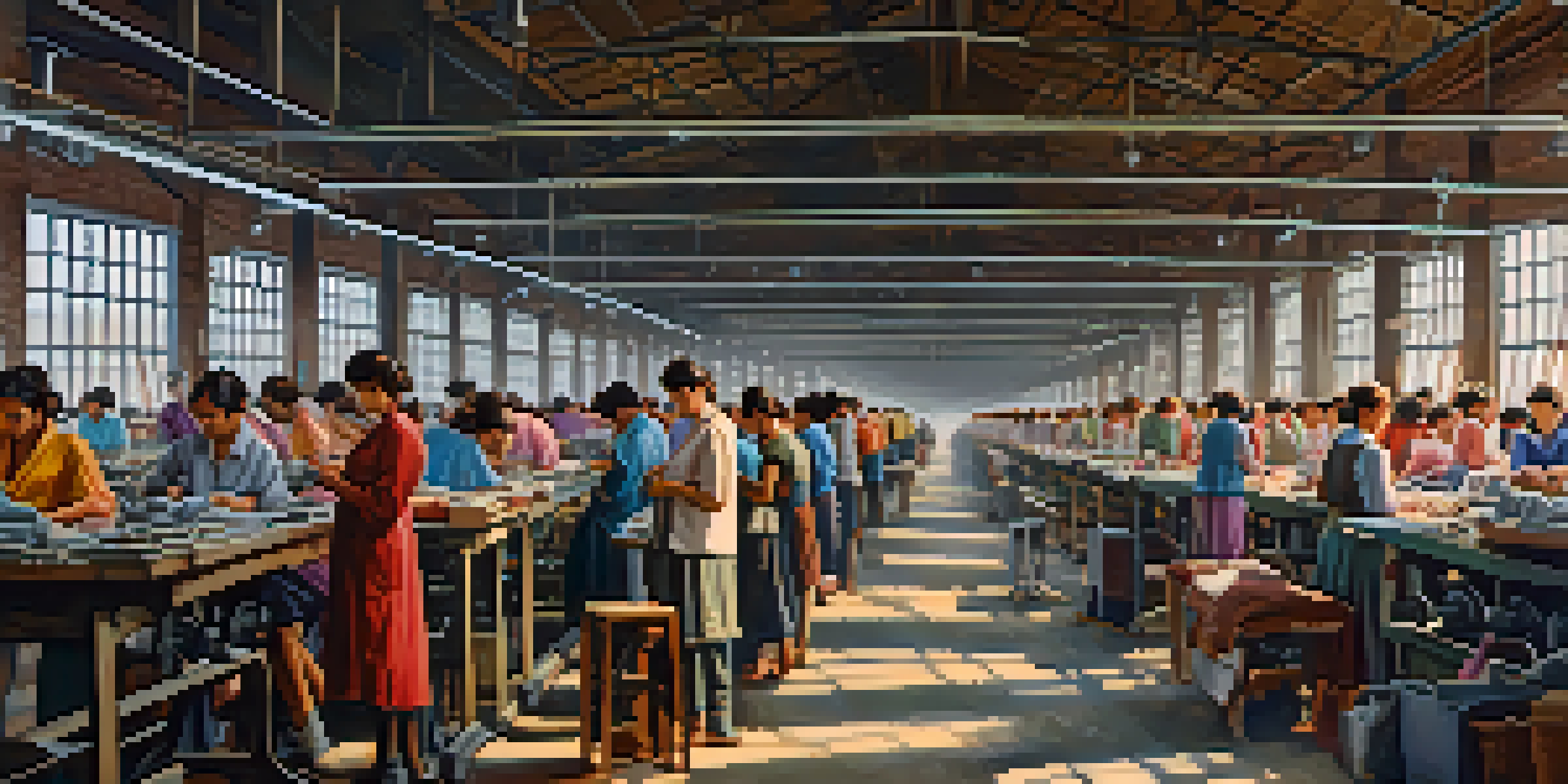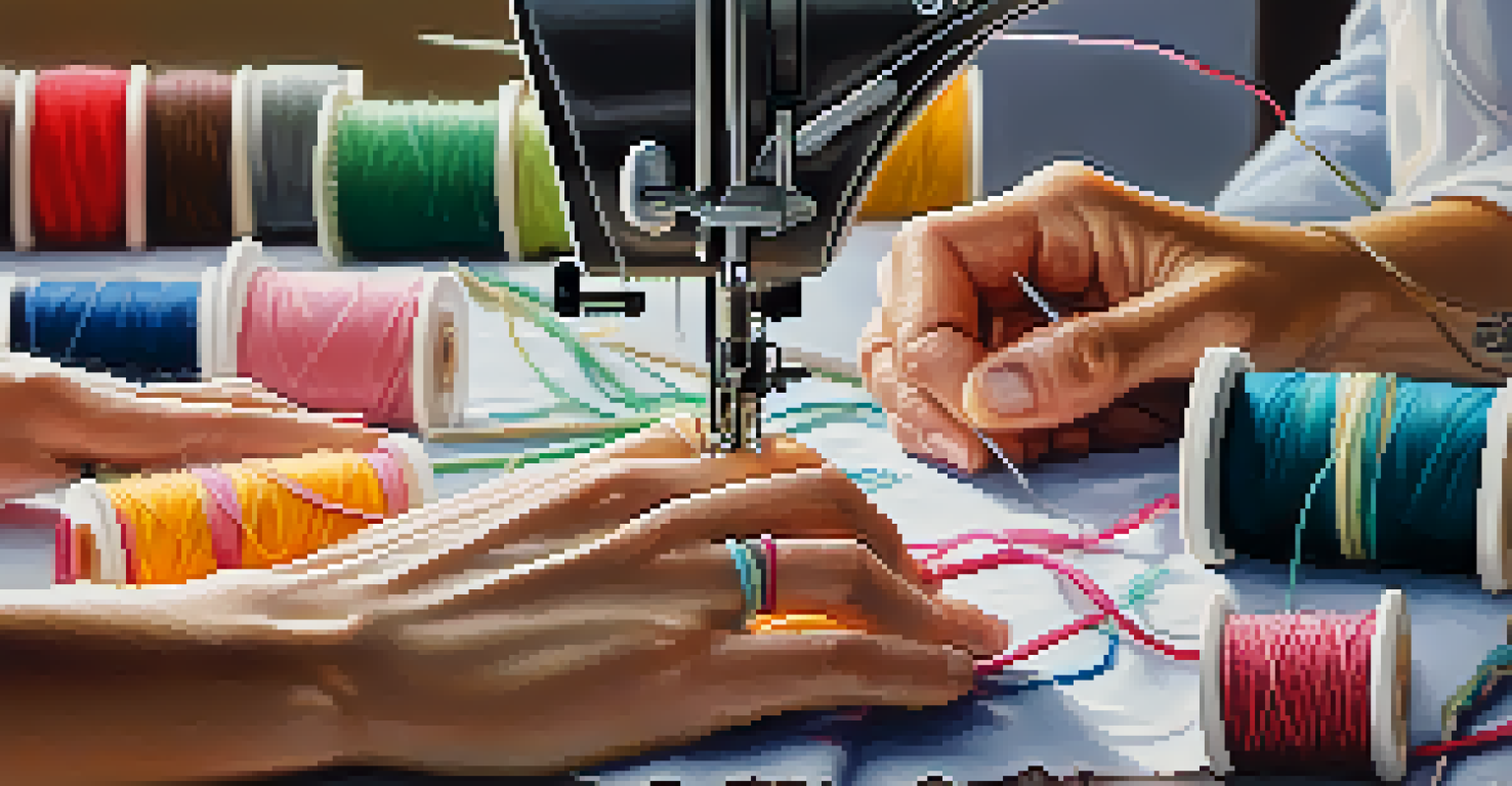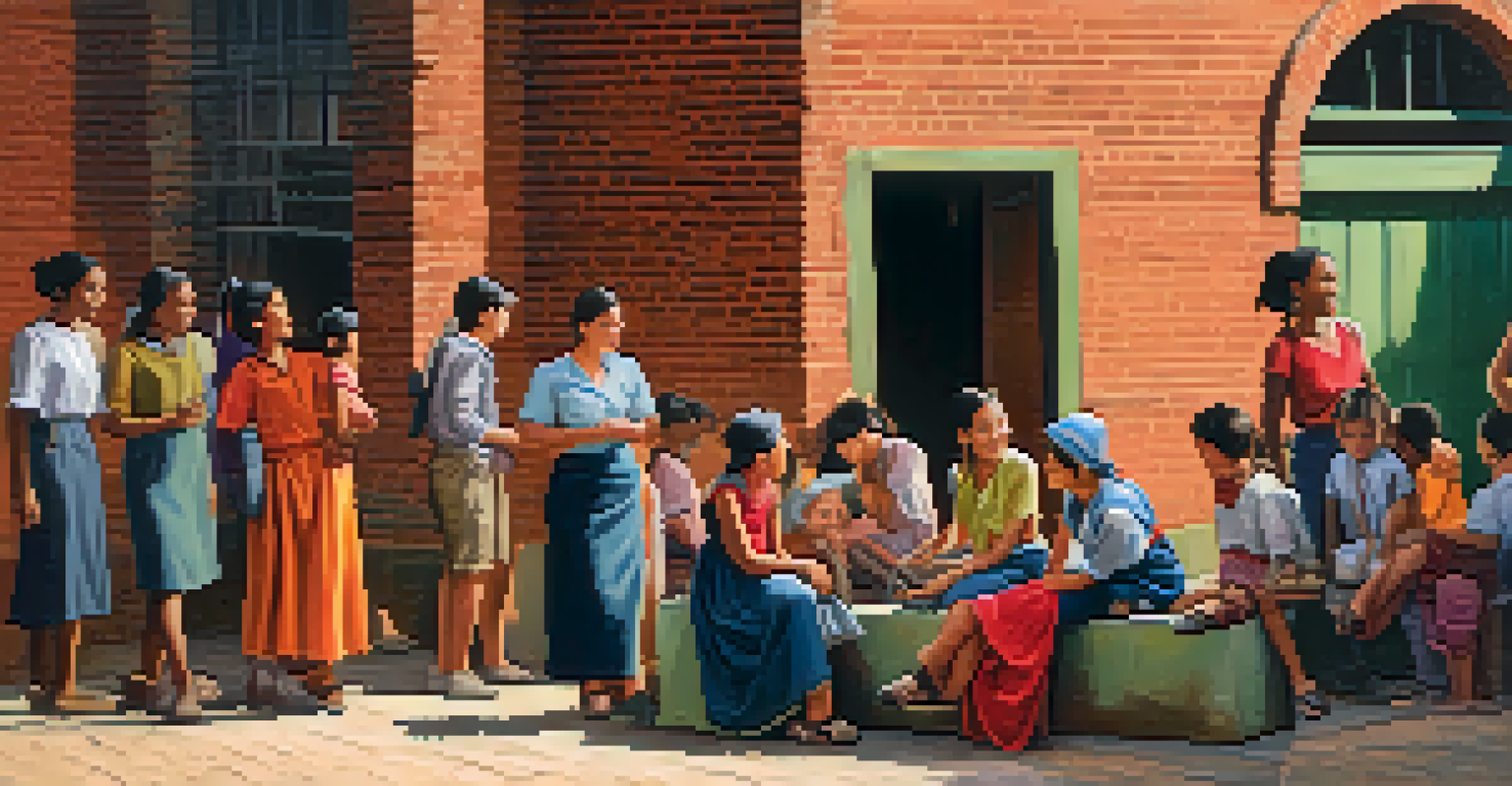Investigating Sweatshop Labor: The Dark Side of Fashion

Understanding Sweatshops: What Are They?
Sweatshops are factories where workers endure poor conditions, often for minimal pay. These workplaces typically prioritize profit over worker safety and rights, forcing employees into long hours without adequate breaks. Imagine a crowded, dimly lit room where workers toil tirelessly, often in silence, just to make ends meet.
The greatest danger in times of turbulence is not the turbulence; it is to act with yesterday's logic.
The term 'sweatshop' evokes images of exploitation, but it encompasses a range of labor practices. Many sweatshops exist in developing countries, where laws may not be stringent enough to protect workers. As a result, countless individuals, including women and children, find themselves in these dire situations.
Understanding what a sweatshop is helps us recognize the impact of our fashion choices. When we buy clothes, we often overlook the human cost behind the production, which is crucial for fostering more ethical consumer behavior.
The Fashion Industry's Role in Sweatshop Labor
The fashion industry is notorious for its reliance on fast fashion, which leads to increased demand for cheap labor. Brands often prioritize low costs and rapid production, sacrificing ethical labor standards in the process. This insatiable appetite for inexpensive clothing creates a cycle that perpetuates sweatshop labor.

Big-name retailers may turn a blind eye to the conditions in their supply chains, focusing instead on profits. This lack of accountability allows sweatshops to thrive, as companies may not take the necessary steps to ensure fair labor practices. As consumers, we play a role in this cycle by supporting brands that prioritize speed over ethics.
Sweatshops Exploit Workers Globally
Many workers in developing countries endure poor conditions and low wages in sweatshops, highlighting the urgent need for ethical practices in fashion.
By examining the relationship between fashion and sweatshops, we can start to shift our purchasing habits. Supporting ethical brands that prioritize fair labor practices can help disrupt this cycle and promote positive change in the industry.
Spotlighting Countries With High Sweatshop Activity
Countries like Bangladesh, Vietnam, and India are often cited as hotspots for sweatshop labor. In these nations, many workers are drawn to the garment industry due to limited economic opportunities. However, this often leads to exploitation, as they are forced to accept low wages and poor working conditions.
Fashion is the armor to survive the reality of everyday life.
For example, the Rana Plaza collapse in Bangladesh in 2013 highlighted the dangers of unsafe working environments. It was a tragic reminder of the human cost behind cheap fashion, prompting global outrage and calls for reform. Yet, despite increased awareness, many factories continue to operate in similar conditions.
By understanding where sweatshops are prevalent, we can better advocate for change. Supporting international labor rights organizations can help improve conditions for workers in these countries, ultimately leading to a more ethical fashion industry.
The Human Cost of Sweatshop Labor
The human cost of sweatshop labor extends far beyond low wages; it includes health risks, long hours, and a lack of rights. Workers often face hazardous conditions with little to no access to medical care, leading to severe health issues. Imagine working in a space where safety regulations are nonexistent, with the constant worry of injury looming over your head.
Moreover, many workers are subjected to verbal and physical abuse from supervisors, creating a culture of fear. This toxic environment not only affects employees' mental well-being but also perpetuates a cycle of poverty and exploitation. As hard as it is to imagine, this is the reality for millions of garment workers worldwide.
Consumer Choices Drive Change
By becoming aware of the implications of our fashion choices, we can support ethical brands and push the industry towards fair labor practices.
Recognizing the human cost of sweatshops is crucial in our quest for ethical fashion. By advocating for better working conditions and fair wages, we can contribute to a more humane industry that respects the dignity of all workers.
Consumer Awareness: The Key to Change
Consumer awareness is a powerful tool in combating sweatshop labor. When we understand the implications of our fashion choices, we can make informed decisions that promote ethical practices. Imagine taking a moment to research a brand before purchasing—this simple act can lead to significant changes in the industry.
By choosing to support brands that prioritize ethical labor practices, we send a clear message to the fashion industry. This shift in consumer behavior can pressure companies to improve their supply chains and commit to fair labor standards. Our collective voice can foster a culture of accountability and transparency.
Moreover, sharing information about ethical brands and the realities of sweatshop labor can help raise awareness within our communities. Conversations about fashion can evolve from mere trends to discussions about human rights, creating a ripple effect that encourages more ethical consumerism.
The Role of Advocacy and Nonprofits
Advocacy groups and nonprofits play a crucial role in addressing the issue of sweatshop labor. Organizations like the Fair Trade Foundation and the Ethical Trading Initiative work tirelessly to promote fair labor practices and support workers' rights. Their efforts often lead to concrete changes in labor laws and factory conditions.
These organizations not only raise awareness but also provide resources for consumers and brands alike. By educating the public about the realities of sweatshop labor, they empower individuals to make informed choices. Imagine a world where consumers are equipped with the knowledge to demand ethical fashion practices from brands.
Advocacy Groups Promote Fair Labor
Organizations like the Fair Trade Foundation are crucial in championing workers' rights and fostering systemic change in sweatshop conditions.
Supporting these advocacy groups can amplify their impact and help drive systemic change in the fashion industry. By collaborating with these organizations, consumers can contribute to a more just and equitable world for garment workers everywhere.
Steps Towards Ethical Fashion Choices
Making ethical fashion choices starts with being mindful of our shopping habits. Opting for sustainable brands, thrift shopping, or even swapping clothes with friends can significantly reduce our reliance on fast fashion. By embracing these alternatives, we can lessen our environmental impact and promote fair labor practices.
Moreover, educating ourselves about the brands we support is essential. Many companies now provide transparency reports detailing their labor practices, allowing consumers to make informed decisions. Just like checking labels for ingredients, we should scrutinize brands for their ethical commitments.

Ultimately, every small step counts in the pursuit of ethical fashion. By being intentional with our choices and advocating for change, we can contribute to a more compassionate industry that respects the rights and dignity of all workers.